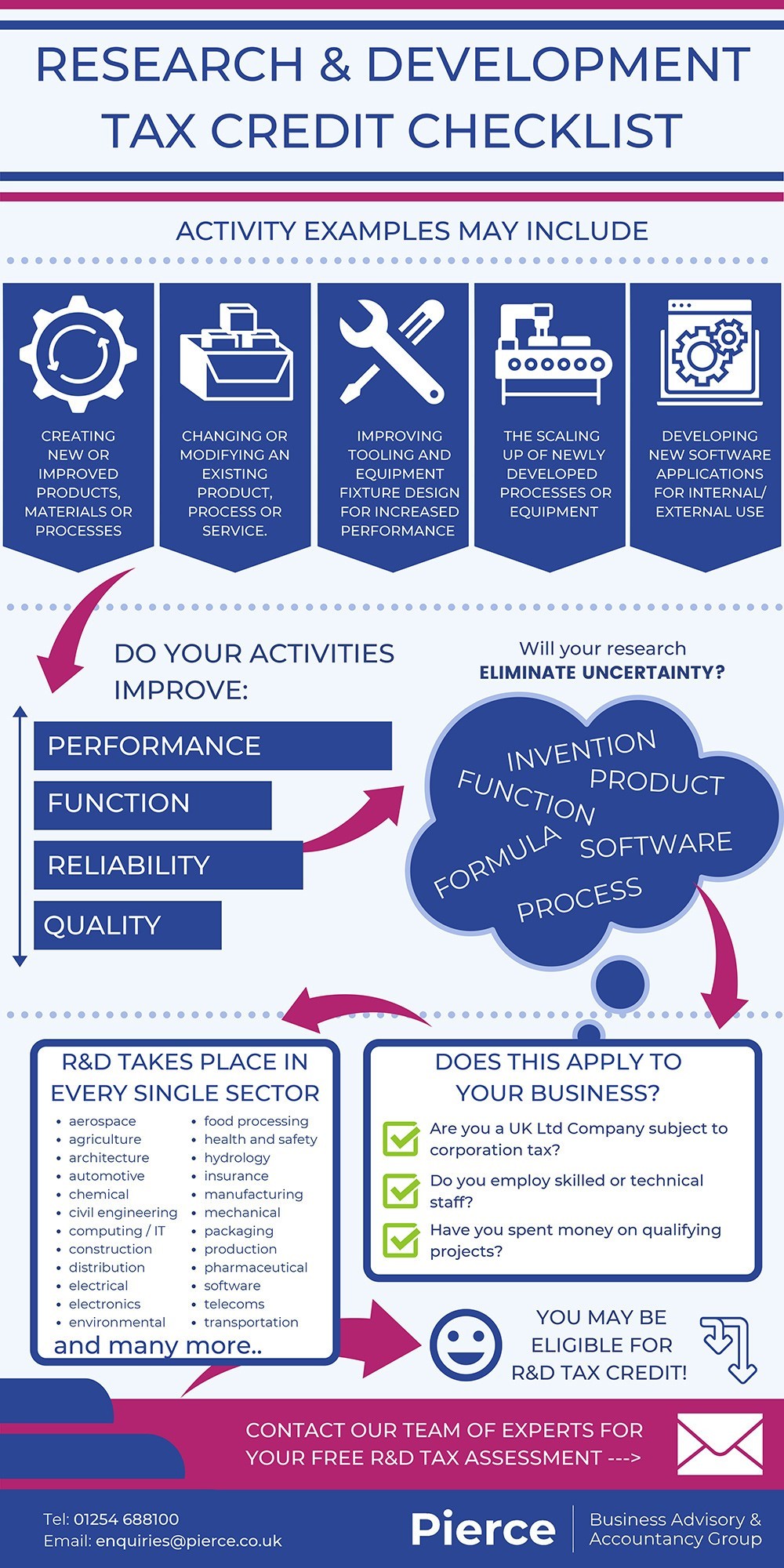R&D takes place in every sector
Here’s just some of the sectors that claim R&D:
| aerospace | food processing |
| agriculture | health and safety |
| architecture | hydrology |
| automotive | insurance |
| chemical | manufacturing |
| civil engineering | mechanical |
| computing / IT | packaging |
| construction | production |
| distribution | pharmaceutical |
| electrical | software |
| electronics | telecoms |
| environmental | transportation |
Would you like to know more?
We are here to help with any questions you may have around R&D tax credits. Please feel free to contact our team to find out more.
